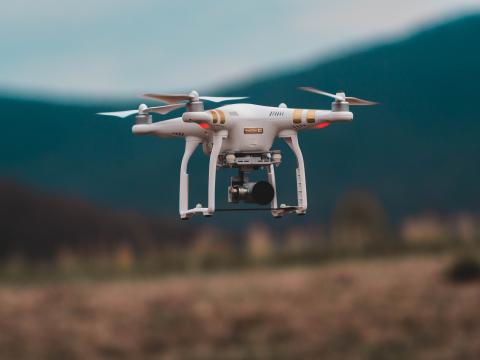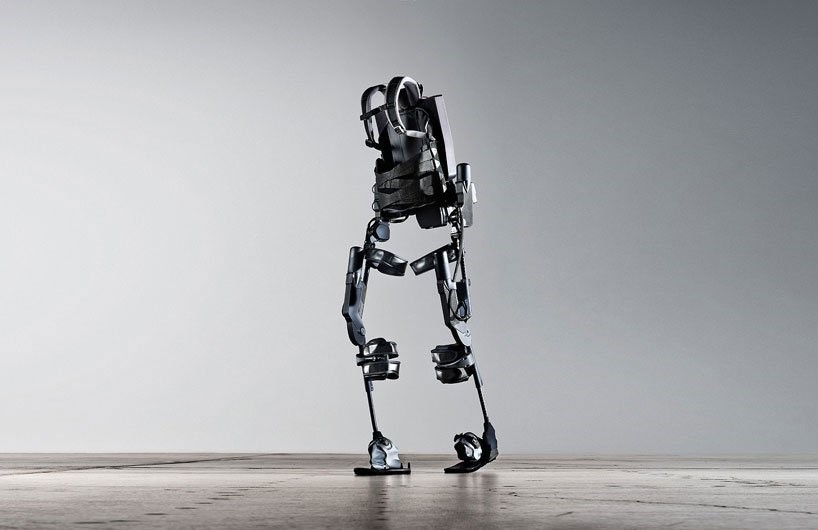Online Technical Training Blog

Unlikely Places You Can Find Robots At Work
Robots contribute to our world on both a large and small scale. The manufacturing industry is shaped by robotics technology and other industries are not far behind from the influence of robotics and AI. New innovations in robotics create opportunities to improve jobs and tasks for humans. With that, industries outside of manufacturing are transforming from these innovations as they put robots to work in unlikely places.
Construction and Architecture
As city populations rise, changes to infrastructure will eventually follow in order to accommodate more people. The construction and architecture industry play an important part in these changes for growing cities. A 2018 report illustrates expected growth of the construction robot industry from $67.9 US million in 2017 to $166.4 US million by 2023. Urbanization is one of the largest factors creating this change and construction robots are also driving an increase in productivity and the improvement of quality and safety. Construction robots perform specific tasks that overlap with traditional construction equipment but they’re evolving to perform more advanced tasks. Not only can they perform traditional tasks like demolition, road rolling and paving, but construction robots are also making their way into nuclear dismantling and demolition, recycling and waste management.
More unconventionally, construction robots are being applied for creative and functional purposes. Robotics construction company, Odico, uses unique methods to create freeform architecture that incorporates complex shapes. The company’s use of industrial robots can create molds for building materials at a lower cost than the alternative of custom made materials which would be a much larger expense.
Healthcare
Low staffing and full waiting rooms are pressing issues that affect nurses and patients. Although it may be too early to see a significant decrease in hospital wait times, when it comes to healthcare facilities and patient care, robots serve many different functions that can increase productivity and boost patient care. They assist patients, work alongside medical practitioners during surgical procedures and also work autonomously. For patients who need mobility support, orthoses and robotic exoskeletons help them with rehabilitation and are most characteristically known to improve mobility with amputees and paraplegics. These robots are essentially anthropomorphic and are fitted to the person wearing them. Disinfectant robots or UV robots are useful at killing microscopic bacteria and germs to prevent HAI (healthcare-associated infections) in hospitals and healthcare facilities. They are currently the most powerful room-disinfectants and are becoming more widely adopted. The UV light is able to kill microorganisms by damaging the DNA inside the cells so that the cells can no longer function.

Photo by Ekso
Food and Beverage Industry
The customer service industry is seeing increased high standards for customer experience. Expectations from consumers to receive consistent, quality products is a determining factor in being brand loyal. In the food and beverage industry, robotic kitchen assistants have been introduced in several fast food chains to increase productivity and help improve conditions for kitchen staff. These robots assist with tasks as simple as flipping burgers and cleaning surfaces. CaliBurger in the United States introduced the robot, Flippy, which is an autonomous kitchen assistant. With the structure of a robotic arm, the presence of the kitchen assistant will allow employees to focus more on customer experience. Similarly, the robotic coffee bar in San Francisco, CafeX creates an efficient and automated experience to produce their drinks. The robotic arm can create a drink in a little under one minute and the café relies on them to primarily serve customers. Another innovative approach to robotics in the food and beverage industry comes from Blendid, a smoothie company in San Francisco from the start up 6d Bytes. Customers use an app to place their order which is then sent to the robot to create their blended drink.
Marine Robotics
Ocean exploration provides answers to many questions about our planet and this research can be conducted thanks to advancements in marine robotics. A Remotely Operated Platform for Ocean Science (ROPOS) is a Remotely Operated Vehicle (ROV) that serves to assist with underwater research and discovery. They work meticulously to collect samples from our oceans and can reach depths of up to 5,000 meters to collect these samples. ROPOS use two manipulator arms and can be equipped with different tools for collecting samples with up to eight additional observation tools attached to them. To map the ocean floor, they use a multibeam sonar system and movements of the ROPOS are directed by technicians and scientists on board the ship. These robots have been used on worldwide missions and have explored the depths of the Pacific, Atlantic and Indian Oceans, including the sub-Arctic and Antarctica.

Photo by Jeremy Bishop on Unsplash
The Military
Robots in the military serve as a crucial line of defense to protect humans from hazards and risks. They’re used in remote or dangerous environments that are unsuitable for humans. Each military robot is designed to perform specific tasks but are most commonly used to withstand harsh conditions or handle toxic chemicals. Daksh is a Remotely Operated Vehicle (ROV) that is designed to recover Improvised Explosive Devices (IEDs) and can operate on rugged terrain. Equipped with multiple cameras, a shotgun and a Master Control Station (MCS), it can also recognize Nuclear Biological Chemicals (NBCs). It can also be controlled remotely from as far as 500m to maximize safety. Smaller in size, PackBot is a product of iRobot and is considered a man-portable robot due to its compact dimensions. This robot is often used to inspect the safety of objects. MARCBot is similar to the PackBot in relation to size and function. It is used to inspect potentially hazardous materials and is one of the smallest military robots.
Robots fulfill endless important tasks across many industries such as those mentioned above. The growing use of robots in these other industries may require more Robotics Technicians to apply their technical skills to the job at hand. It’s never too late to embark on learning the basics of industrial robotics and discover where those skills might take you. If you would like to learn more about our Robotics Technician program, you can reach out to one of our Program Consultants toll free at 1-888-553-5333 or visit https://www.onlinerobotics.com/.


